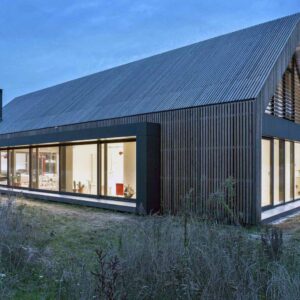Latitude, an invisible line that circles our planet, has a profound impact on our daily lives. From the climate we experience to the crops we grow, latitude plays a silent yet significant role. But how does it influence architecture? The answer lies in the interplay of light, temperature, and local materials. This article delves into the intricate dance between latitude and architectural choices, particularly in the realm of building materials.




Stone: The Bedrock of Cold Climates
Stone, a material as ancient as time, has been the cornerstone of architectural marvels in higher latitudes. Its dense composition and thermal mass properties make it an ideal candidate for regions that experience extreme cold. The stone’s ability to absorb heat during the day and slowly release it during the night ensures a consistent temperature within the structure.
Historical landmarks, from the towering castles of Scotland to the fortified walls of northern China, stand as testaments to stone’s enduring appeal. These structures, built centuries ago, leveraged the local abundance of stone and its protective qualities against the biting cold.
In contemporary architecture, the stone continues to be revered, not just for its aesthetic appeal but also for its sustainability. With the rising emphasis on eco-friendly construction, local quarries are seeing a resurgence, providing materials that blend seamlessly with the landscape and reduce transportation emissions.
Beyond its thermal benefits, stone offers a palette of design possibilities. From rough, uncut boulders to polished marble, the range of textures and finishes allows architects to craft structures that are both functional and artistic.
The future of stone in architecture looks promising. With advancements in stone cutting, treatment, and modular construction, we can expect to see more innovative applications, from floating stone villas to high-rise stone-clad skyscrapers.







Timber: Echoing the Forests of the Mid-Latitudes
Timber, the living legacy of vast forests, resonates deeply with the mid-latitudes. These regions, blessed with abundant woodlands, have a rich history of timber-based construction. The material’s renewable nature and ability to lock in carbon make it a sustainable choice for modern architects.
From the stilt houses of Southeast Asia to the log cabins of North America, timber has been molded, carved, and assembled in countless ways. Its versatility is evident in the myriad architectural styles it has birthed over the centuries.
Modern treatments and techniques have elevated timber’s role in architecture. Cross-laminated timber (CLT) and glue-laminated timber (Glulam) are revolutionizing the way we perceive wooden structures, allowing for taller, more durable buildings.
Beyond its structural benefits, timber offers a sensory experience. The grain patterns, the earthy scent, and the tactile warmth of wood interiors evoke a sense of comfort and connection to nature.
As urban landscapes become increasingly concrete, the allure of timber becomes even more pronounced. Future cities might see a blend of steel, glass, and wood, where timber skyscrapers stand tall, echoing the forests of yore.




Clay and Adobe: The Heartbeat of the Tropics
Clay and adobe, the earth’s humble gifts, have shaped the architectural landscape of the tropics. In regions where the sun blazes with intensity, these materials offer a natural respite, their cooling properties creating sanctuaries of comfort.
The sun-baked homes of Africa, the Middle East, and parts of South America stand as symbols of resilience and ingenuity. These structures, often adorned with intricate patterns, are a blend of art and architecture.
The beauty of clay and adobe lies in their simplicity. Sourced locally, mixed with water, and sometimes reinforced with straw or fibers, they are molded into bricks or applied as plaster, creating structures that breathe.
Modern architects, in their quest for sustainable solutions, are revisiting these age-old materials. With the added benefits of thermal insulation and passive cooling, clay and adobe are becoming increasingly relevant in today’s context.
As the world grapples with climate change, the lessons from the tropics become invaluable. Adobe skyscrapers and clay-clad offices might soon dot our urban landscapes, merging tradition with innovation.



Conclusion: Latitude, with its silent yet profound influence, weaves a tapestry of architectural diversity across our planet. From the stone fortresses of the north to the timber homes of the mid-latitudes and the adobe abodes of the tropics, building materials narrate tales of adaptation, culture, and innovation. As architects and builders of the future, understanding this intricate relationship between latitude and material choice is our key to crafting spaces that resonate with both the environment and the soul.












